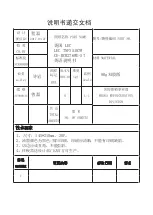
5.
CARE AND CLEANING
CAUTION!
Unplug the appliance before car-
rying out any maintenance opera-
tion.
This appliance contains hydrocar-
bons in its cooling unit; mainte-
nance and recharging must there-
fore only be carried out by author-
ized technicians.
5.1
Periodic cleaning
The equipment has to be cleaned regular-
ly:
• Many proprietary kitchen surface clean-
ers contain chemicals that can attack/
damage the plastics used in this appli-
ance. For this reason use a soft cloth
rinsed in warm water and neutral soap
emulsion for cleaning internal and exter-
nal surfaces.
Do not use detergents or abrasive
paste for external surfaces as
these will damage the paint, or
stainless steel anti finger print
coating.
• regularly check the door seals and wipe
clean to ensure they are clean and free
from debris.
• rinse and dry thoroughly.
• Clean the condenser (black grill) and
the compressor at the back of the ap-
pliance with a brush. This operation will
improve the performance of the appli-
ance and save electricity consumption.
Do not pull, move or damage any
pipes and/or cables inside the
cabinet.
Take care of not to damage the
cooling system.
After cleaning, reconnect the equipment
to the mains supply.
5.2
Periods of non-operation
When the appliance is not in use for long
periods, take the following precautions:
•
disconnect the appliance from elec-
tricity supply
• remove all food
• defrost (if foreseen) and clean the appli-
ance and all accessories
• leave the door/doors ajar to prevent un-
pleasant smells.
If the cabinet will be kept on, ask some-
body to check it once in a while to pre-
vent the food inside from spoiling in case
of a power failure.
5.3
Defrosting the refrigerator
Frost is automatically eliminated from the
evaporator of the refrigerator compart-
ment every time the motor compressor
stops, during normal use. The defrost wa-
ter drains out through a drain hole into a
special container at the back of the appli-
ance, over the motor compressor, where
it evaporates.
It is important to periodically clean the de-
frost water drain hole in the middle of the
refrigerator compartment channel to pre-
vent the water overflowing and dripping
onto the food inside.
5.4
Defrosting of the freezer
The freezer compartment of this model,
on the other hand, is a "no frost" type.
This means that there is no buildup of
frost when it is in operation, neither on the
internal walls nor on the foods.
The absence of frost is due to the contin-
uous circulation of cold air inside the
ENGLISH
11










































